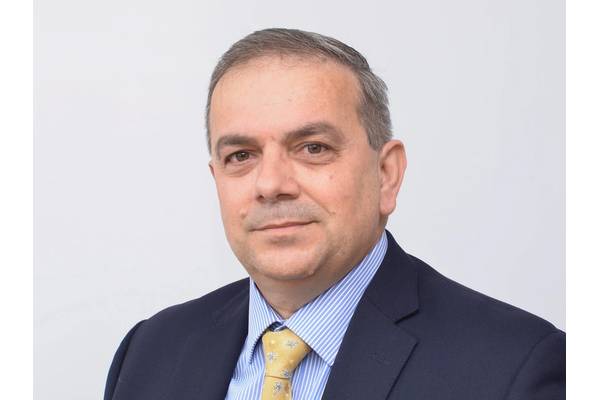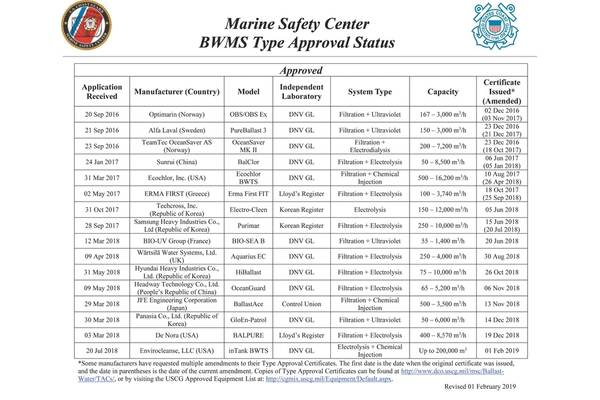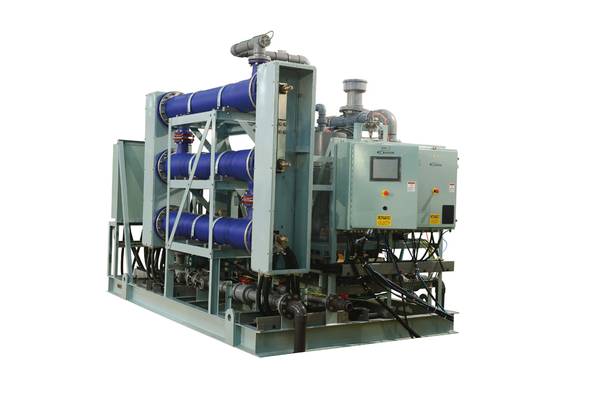


As the Ballast Water Management Convention (BWMC) deadline for compliance approaches, the market is visibly gearing up to address the snowballing demand across the board.
Ballast water treatment system (BWTS) manufacturers are sizing up the competition as ship owners weigh up their immediate needs, against a sustainable future for their vessels. With the conversation reaching a crescendo, now more than ever it is vital that manufacturers are transparent about their provisions and focus on how best to meet the needs of the customer. Shipowners and operators need to aim for long-term consistent and reliable compliance, and not be drawn into making decisions based only on equipment price.
Managing Demand
In this uncertain environment, and with the sudden plethora of U.S. Coast Guard ballast water treatment system approvals (and more apparently to come), it is important that owners do not leave it until the last minute to start thinking about compliance options. Indeed, the option to delay is becoming a much less likely option, especially with a wide range of manufacturers, treatment system types and system capacities now available.
It is understandable that some ship owners have decided to complete their IOPP renewal ahead of schedule to postpone the installation of a system. However, without a clear plan of action to address the issue at the end of those five years, they are likely to be dealing with exactly the same problems. The difference will be that all the “get out of jail free” cards will have been used up, and by that point they will likely be held responsible for both IMO and USCG requirements without any flexibility on extensions.
Reviewing survey dates and the impact of IOPP deharmonization indicates an expected significant increase in demand for equipment and installations in 2021-2022. Owners that will find themselves requiring a system during that time should be exploring technology and suitability options for their vessels now. BWTS manufacturers, class societies and dockyards are likely to be operating at full capacity during that same 2021-2022 period, meaning long waiting lists for project deliveries that will impact the commercial returns of their assets. Establishing a strong relationship with BWTS manufacturers of choice now will put owners in a stronger position as compliance becomes unavoidable.
Solutions for Large Vessels
The industry is now widely in agreement that for larger vessels with expansive ballast tanks and high pumping rates, slip stream electrochlorination systems are the clear BWTS of choice. Introducing the chemical treatment into the ballast line, as opposed to treating the entire volume of water, serves as a more flexible and efficient footprint to alternative methods on the market.
Treating in this instance means that only 0.5% to 1% of the water entering the ballast line needs to be channeled into the treatment system. This is ideal for vessels with high-pumping rates and large volume ballast tanks as the hypochlorite used to treat the water is created in the slipstream and is then introduced to the full flow of ballast water. Ballasting or deballasting can therefore be completed at normal speeds with no need to reduce the flow rate of water. Tank flows ranging from 400 to 12,500 cubic meters per hour can be treated with a single system with multiple systems able to be installed together to treat larger capacities.
It is not just the effectiveness of the treatment that owners and operators need to consider. Systems designed with flexible installation features bring cost savings and reduce engineering, project delivery time, logistical management and enable efficient installation. An electrochlorination system made up of multiple sub-assemblies designed to fit through most hatch doors, allowing quick and easy retrofit installations, presents a more streamlined process. This also allows a flexible footprint to minimise machinery space usage whilst enabling optimised use of dead space onboard.
Maintenance
As many ship-owners and industry experts are acutely aware, it is not only system choice and installation that pose dilemmas.
In a sector where crews are already overburdened and tasked with activities that many are ill equipped to perform, shipowners and operators are understandably nervous about potentially increasing the workload through their choice of BWTS. It is not just a matter of type that best suits the vessel and its operating pattern that owners need to consider. The operational and maintenance requirements of each solution and the potential impact on crew and day-to-day operations will also play a part in the decision making.
This is brought keenly into focus when exploring the factor of long-term compliance. Over time, mineral deposits of calcium and magnesium can accumulate on the cathodes. This fouling reduces levels of chlorine produced, compromising the efficacy of the system and therefore not reaching the required standard for treatment dose, rendering the vessel non-compliant. Electrode pack fouling reduces the power efficiency of the electrolysis process. The power demand increases, and the biocide generation is inhibited by fouling; in effect the BWTS uses power for no benefit.
On these typical electrochlorination systems, crews need to be specifically trained to clean the electrodes regularly every 8-10 months using an acid, most commonly hydrochloric. Additional training and personal protection equipment will also need to be supplied to ensure the safe handling of hazardous and extremely corrosive substances. However, leveraging their knowledge and experience of ‘in situ’ biocide electrolytic disinfection solutions, De Nora has developed a proprietary self-cleaning system for the electrodes rendering this type of maintenance obsolete.
De Nora BALPURE allows the polarity of the electrodes to be reversed. This means that the deposits are stripped from the cathodes because they become anodes and repel the build-up through the same process in which it accumulated. This is done in a fully automatic manner by the system, eliminating the need for crew intervention and ensuring that an effective and efficient BWTS is self-maintained.
Competitive Conflicts
Despite attempts across the ballast sector to highlight the importance of shipowners make the right choice for their businesses, their operating routes and their ship types, competition among suppliers is growing as compliance deadlines loom. The rumblings of a ‘price war’ between technology manufacturers, driven by the demands of CAPEX-sensitive owners, continues to reverberate across the sector. The reality is that although the message from manufacturers and suppliers is all about finding the right system, the incoming questions aren’t about applicability or maintenance requirements – they are about price.
A price-driven mindset undoubtedly leads to predatory pricing. Such predatory pricing is already perceptible in shipbuilding countries, where domestic suppliers dominate the newbuild market at the expense of foreign makers.
But these costs are often cut at the expense of the ship owners that both perceive them as a benefit and are driving them. Manufacturers offset price reductions by offering owners less aftercare and fewer additional services, and there’s a risk that increased commoditization will encourage a ‘fit and forget’ mentality amongst suppliers.
In the retrofit case, if owners are investing in ballast water treatment, it’s clear they’re expecting a further ten or more years of operation for those ships. The risk of incurring future costs in order to extend the lifecycle of a cut-price system that needs extensive maintenance, repair, or in extreme cases replacement, needs to be factored in to the decision-making process. A low-cost ballast water treatment system with meager operational availability would be a poor decision, especially when compared to a system that is a good fit to the ship’s operational profile with enhanced availability and reliability, but coming at a higher upfront cost.
When the initial enthusiasm over securing the best up-front deal fades, the stark reality is that crippling future costs in the medium to long term look set to take the shine out of any deal. A price war means a race to the bottom. Manufacturers will turn to the lowest priced specification to maintain profit margins, and that means compromise – either on durability or efficiency or, in some cases, both. That means more spend on maintenance and spare parts, greater energy expenditure and higher fuel costs for owners in the long-run.
Reputable BWTS manufacturers should be assessed on their capacity, financial stability, commitment to the market and long-term record of customer service. Ruthless undercutting at this stage will only lead to more future uncertainty.
A Considered Approach
With so many internal, external, long-term, short-term, cost, benefit and certification considerations it’s no wonder that many owners are still to decide on what system to install or supplier to work with. But we think the solution is simple, find a partner, not a price. Having recently been awarded United States Coastguard (USCG) Type-Approval for our BALPURE ballast water treatment system, we are confident that when it comes down to the wire, De Nora has the experience, totalling 95 years of knowledge and testing in electrolytic disinfection, to wear the mantle of experts in our field.
Whatever a ship operator might decide, they should find an OEM willing to take the time to offer practical, unbiased information to ship owners in a sector crying out for transparency. Owners should find a BWTS supplier that is willing to talk to them with honesty and not sales patter, provide them with expert advice rather than adverts, and one that is as committed to their clients’ long-term compliance as their short-term orderbook, offering guarantees and service agreements.
Dr. Stelios Kyriacou is a ballast water management system expert committed to delivering the best possible long-term solutions for ship owners. Since 2009, he has managed the research, development, and certification of industry-leading ballast water management systems. With a PhD in Engineering Mechanics from Cranfield University, he has lent his expertise in ballast water and maritime issues to the International Maritime Organization's (IMO's) Marine Environmental Protection Committee (MEPC), Ballast Water Working Group, IMarEST Ballast Water Expert Group and to UK Government and European committees on maritime strategy, innovation and regulation. Currently, Stelios is the General Manager of De Nora's BALPURE ballast water management system (BWMS) business unit.
This article first appeared in the n/FEB 2019 print edition of Maritime Logistics Professional magazine. Images ALL courtesy of De nora BALPURE.


